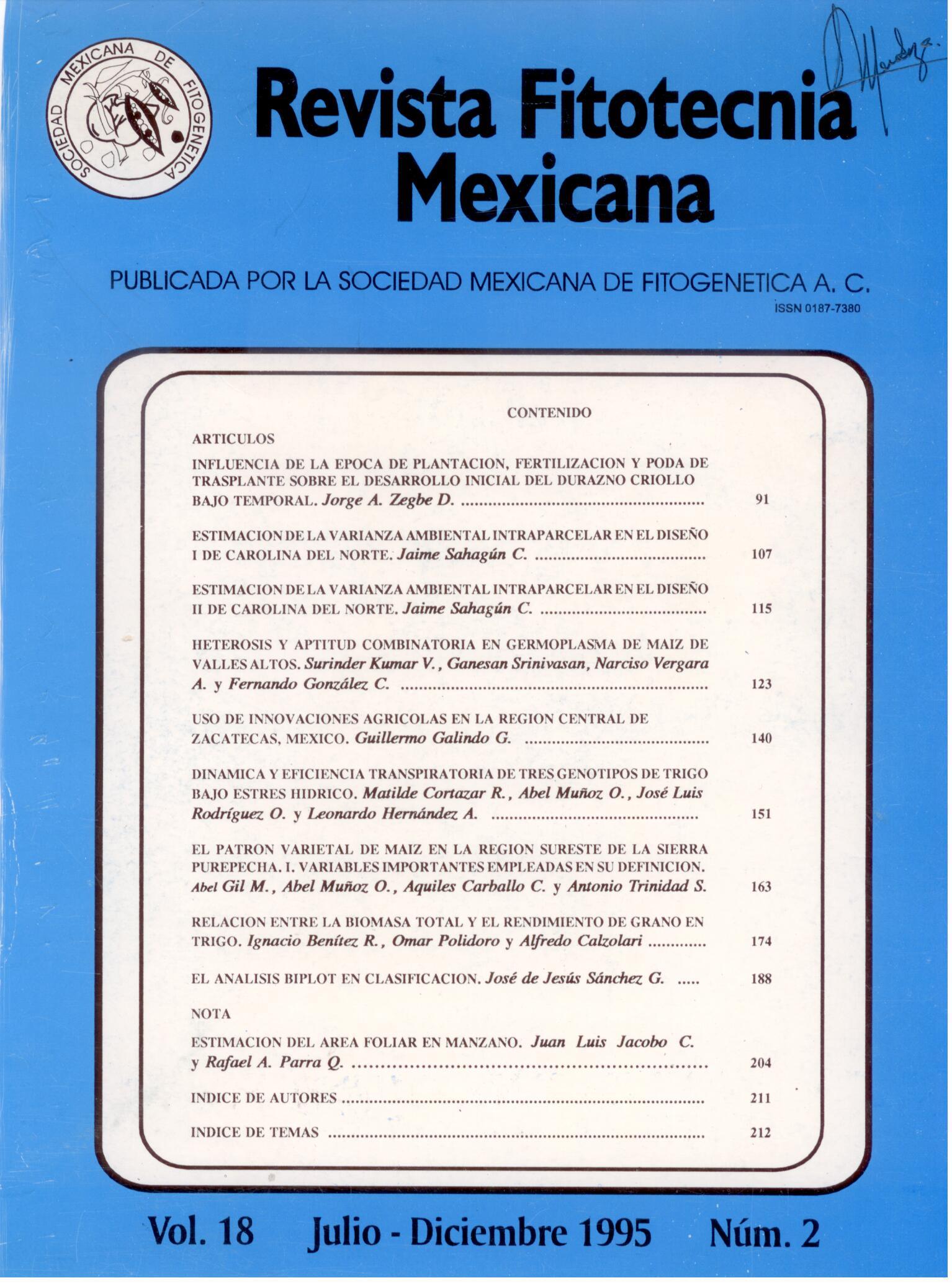HETEROSIS AND COMBINATORY APTITUD IN GERMOPLASM OF HIGH VALLEYS CORN
Main Article Content
Abstract
Twelve highland maize (Zea mays L.) pools and populations developed by CIMMYT and INIFAP were crossed in a diallel mating system to determine their heterosis and combining ability. Crosses and their parents were evaluated in four environments; two during 1988 in El Batán and Toluca, México, and two during 1989 in El Batán and Santa Catalina, Ecuador. A separate analysis was made for each location due to the strong genotype x environment interaction, and general (GCA) and specitic (SCA) combining ability effects were calculated by maturity group. 1) In El Batán, Pool 12A had the highest yield (7 .19 t/ha) and was significantly superior to most of the parents, with the exception of Pool 13A (6.00 t/ha) and the early Populations 85 (6.17 tlha) and 86 (5.88 tlha). Among the early materials, Pob. 85, Pob. 86 and PPA had the highest GCA effects for yield and tended to produce progenies with later maturity. Pool 12A had the highest GCA effects for yield among the late maturity group and also among the crosses of late x early materials. High parent heterosis for yield among the best crosses ranged from -8.6% in Pool 12A x PABG to 18.2% in Pool 10A x PABG. The best cross among late white materials was Pob.87 x Pool 12A (7.38 t/ha), although heterosis was only 2.7% with 0.55 t/ha of SCA for yield. Best cross with yellow grain was Pob.88 x Pool 13A (6.69 t/ha) with yield heterosis of 11.6% and 0.45 t/ha of SCA effect. 2) In Toluca, the local check H-32 outyielded (7 .93 t/ha) all crosses and their parents, followed by Amarillo Zanahoria that has excellent adaptation to Toluca conditions. The best crosses in this location involved Amarillo Zanahoria, PPA or PTH. These three parents had good yield per se and the highest GCA effects in the early group. The crosses with the highest yield heterosis were Pool 11A x PTH with 13.3% heterosis and 0.80 t/ha of SCA, and Pool 13A x PTH with 14.3% heterosis and 0.20 t/ha of SCA. 3) In Santa Catalina, the best local check yielded significantly better than the twelve parents in the study, but also was 13-49 days later in days to silk. Heterosis in this location was high ( > 20%) due to the relatively poor yield of the parents. Pool 12A x PABG was the best cross with 24.3% heterosis and SCA of 0.70 t/ha. Both parents have the same grain color and maturity, and were resistant to common rust (P.sorghi) and leaf blight (H. turcicum). In the three locations, several of the best crosses involved the heterotic pattem of Cónico x Chalqueño, and the majority of these crosses involved parents with different maturity and grain color, which limits their potential use in a hybrid program. However, parents of outstanding combinations offer possibilities for line extraction for hybrid formation.

